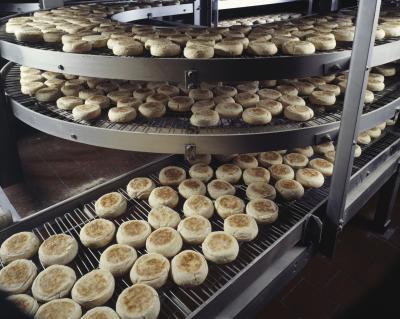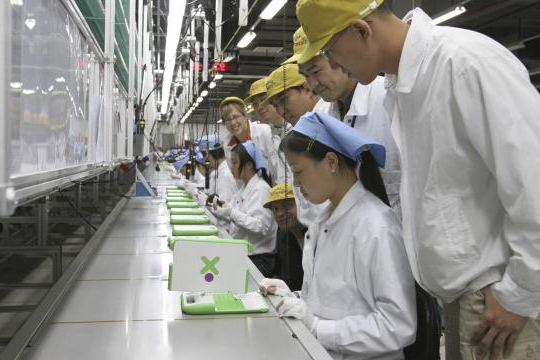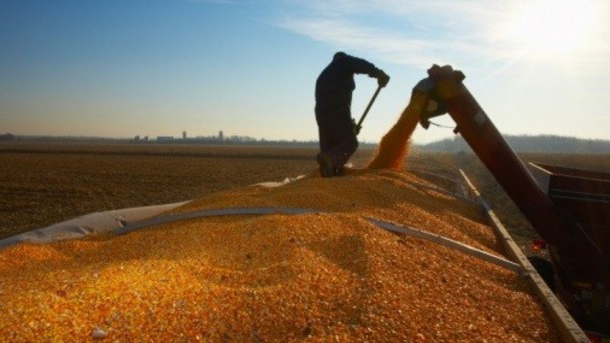The purpose of the activity of most business entities is to profit from the sale of goods and the provision of services. However, in order to sell a product, you must first purchase it from another company or produce it yourself. In both cases, the business is not without costs.
Costs are the cost of the consumed funds in the production process (in particular, materials, raw materials, labor of workers, etc.). In other words, these are all economic resources that were used to produce certain goods, expressed in a single monetary equivalent.
Costs that form the cost of the final product, services rendered or work performed in a certain period and can be reliably estimated constitute production costs.

Cost classification
The growing unprofitability of business entities in various industries indicates the need to improve cost management. For the rational management of their costs, enterprises are classified according to various criteria.
Due to limited resources, each manufacturer is faced with the need to compare several alternatives and dwell on one of them. This choice is permanent. Costs play a key role in solving this problem. They allow you to assess the cost of production of a product. The part of the costs, the value of which depends on a particular option, is taken into account. These costs are called relevant. It is them who are taken into account by the leadership for making the best decision. In contrast, irrelevant costs are independent of the chosen alternative and will be incurred by the company in any case.
AT management accounting also emit sunk costs. None of the decisions made can affect their value.
For the purpose of effective management, incremental and marginal costs are calculated. The first enterprise bears when releasing an unplanned batch of products. The costs that the company incurs in the production of one additional unit of output are called marginal.
The costs of the enterprise are planned taking into account the expected production volumes norms and limits. They relate to the planned cost of production. However, there are unplanned costs that arise in fact. An example would be a marriage.
Depending on whether the amount of costs incurred varies with the volume of output, they are classified into fixed and variable production costs.
Fixed costs
The peculiarity of the former is that they do not change in a short period of time. If the company decides to increase or, conversely, reduce output, such costs remain at the same level. Fixed costs - a fee for the rental of industrial premises, warehouses, retail outlets; salary of administrative staff; maintenance costs of buildings, in particular utilities. However, it must be borne in mind that only the size of the total costs for the entire issue is constant. Costs calculated per unit of output will decrease in direct proportion to the growth in production volumes. This is a pattern.

Variable production costs
As soon as a business entity begins to produce products, variable costs arise.Their main share is formed by used working capital. While fixed costs remain relatively stable for the enterprise, variables directly depend on output volumes. The larger the production volumes, the higher the costs, respectively.
The composition of variable costs
Variable production costs include the cost of materials and raw materials. In the course of their planning, the standards for the consumption of materials relative to the unit of the finished product are used for calculation.
The next item of variable costs are labor costs. These include the salary of the main personnel involved in production, auxiliary staff, craftsmen, technologists, as well as maintenance personnel (movers, cleaners). In addition to the main salary, bonuses, compensation and incentive amounts, as well as remuneration of workers who are not in the main state, are taken into account here.
In addition to materials and raw materials, most business entities bear the cost of purchasing auxiliary materials, semi-finished products, spare parts, components and fuel, without which in most cases the production process is impossible.

Classification of variable costs
As noted earlier, the value of variable costs depends on the volume of output. However, these indicators do not always change in equal proportions. By the nature of the dependence of costs on the amount of manufactured products they are classified into progressive, digestive and proportional.
By the method of including variable costs in the cost of production, they are divided into direct and indirect. If the former are immediately transferred to the value of the issued good, then the latter are distributed among various types of products. For this, the distribution base is selected. It can serve as the cost of raw materials or the salary of key workers. Indirect production costs are represented by administrative and managerial expenses, the costs of staff development, the social sphere and production infrastructure.
For effective management, the total and average variable production costs are calculated. To determine the last indicator, the total cost is divided by the number of products produced.
Gross production costs of the enterprise
In order to assess the profitability of the production of a product, the company needs to calculate the gross (total) costs. In the short term, they are formed by a combination of variables and fixed costs. If for some circumstances the company does not produce products, then the gross costs are equal to constant. As production volumes increase during the course of economic activity, total costs increase by the amount of variables depending on the amount of manufactured products.
Conditionally variable costs
It is worth noting that in practice variable production costs most often include constant components. Therefore, it is more correct to talk about conditionally variable costs. Such costs, although they depend on the volume of production, but when they increase or decrease, they change not directly proportionally, but stepwise.
In order to describe the nature of the effect of the number of goods produced on variable costs, a response coefficient is used. It is calculated by dividing the growth rate of variable costs by the growth rate of production volumes. The latter characterize the business activity of the enterprise. The cost response coefficient was introduced by the German scientist K. Mellerovich. If the variable costs vary in proportion to the output, this indicator is equal to one.
Features of accounting for variable costs
An important element in the construction of production cost accounting is the reasonable establishment of its facilities.
Cost object - this is the manufactured products, services rendered, work performed or certain types of activities of the enterprise that require determination of the costs associated with them.
Variable production costs are accounted for in order to timely and correctly reflect the actual costs of production under the relevant costing items, as well as to identify reserves of savings and prevent overuse of materials and non-production losses. In addition, it provides the information necessary for operational control at the enterprise.
Display of expenses in accounts
To account for production costs, account 20 is allotted. It summarizes information on the costs incurred by the business entity in producing products, providing services and performing work, which are the main purpose of its activities. So, in this account, the cost of the production of agricultural as well as industrial products, the installation and construction, design and survey, exploration, construction, research and other types of work is carried out.
The debit 20 of the account displays the direct costs of the main and auxiliary industries, which are associated with the main activity of the enterprise, indirect costs on their maintenance and management, as well as marriage.
The “Main production” is charged to the costs of credit accounts, which take into account stocks and materials, settlements with employees on wages, etc.
Costs auxiliary production 23 accounts are debited to the 20 account from the loan, management and maintenance costs - from 25, losses from rejected products - from the loan 28.
For loan 20 of the account, the actual cost of products manufactured, services rendered and completed work is displayed. These amounts are written off to the debit of accounts for the accounting of finished products (43), sales (90) and others. The balance of account 20 at the end of the month characterizes work in progress.
Analytical cost accounting
For conducting analytical accounting on the sub-resources of account 20, the expenses of the enterprise and the products manufactured by their types are displayed. If a business entity produces a limited assortment, then analytical accounting can also be carried out for individual units or workshops. In this case, sub-resources of orders 2 and 3 of the order are also not opened for accounts intended for accounting for goods and services produced.
Cost of production
An important function of cost accounting is the calculation of the cost of production. For various purposes, different types of cost are used. So, in financial accounting they calculate:
- production cost;
- cost of goods sold;
- total cost.
The production cost of production includes both fixed and variable production costs. This indicator characterizes the amount of costs that the company incurred for the production. If we add to it the costs of packaging the goods, advertising, delivery, and other selling expenses, we get the full cost.
To calculate the cost of one released good, both fixed and variable costs per unit of output are taken. They include the costs of production materials, fuel, transportation of products within the enterprise, wages, depreciation, maintenance and repair of fixed assets, as well as other costs.
Direct and indirect variable costs
When calculating the cost of production, variable costs should be divided into direct and indirect. The first include in the cost of specific products according to primary accounting. The second is impractical to directly relate to the final product of production due to its technological features.Direct variable costs include the costs of materials and raw materials, fuel and workers' wages; indirect costs of raw materials used in the production complex.

The role of variable costs in the management of a business entity
The main goal of accounting for variable production costs is the effective management of the organization. In order to rationalize the activities of the enterprise and get the maximum profit, managers analyze the costs of production, output volumes, as well as the profit that a business entity can receive as a result of the realization of the benefits received.
Based on this, a decision is made to expand production. If this can improve the financial result of the economic activity of the organization, the optimal structure of products is determined, and prices for goods are also set. In order for the management to be able to determine how much production should be made in order to maximize profits, it is necessary to know how variable production costs will change with an increase in output.
In practice, the behavior of variable costs determines the law of diminishing returns. This means that an increase in the number of manufactured products to a certain point leads to a smaller increase in variable costs for the production of each next unit. Therefore, while this trend continues, it is advisable for the company to increase the volume of goods produced. But as soon as marginal productivity falls, the output of additional products requires more resources, and an increase in its volume becomes irrational.
For effective management, it is important for management to know not only gross costs, but also their value per unit of output. This indicator can be compared with the price of goods to determine the final financial result - profit or loss. Nevertheless, it is worth noting that certain factors, in particular the instability of a market economy, as well as the possibility of marriage, do not allow to accurately plan the value of production costs and incomes.








